sometimes access to laundry detergent is not possible for housewives and they decide to use a safer homemade recipe that is more cost-effective and eco-friendly. On the other hand, many individuals show allergic symptoms to synthetic detergent products. So they prefer to use the washing detergents that are made by themselves and they be completely aware of the materials that are used in the laundry detergent. It is not an impossible task. All housewives can be sure that this task is not beyond their abilities.
If you want to make your own laundry detergent and you care about its environmental destructive effects, you may need to make a little change in the recipe. While it’s undoubtedly greener than most commercial detergents, you can add some items that aren’t considered organic and green, such as wash Scent boosters. But a scent booster can also be prepared with baking soda and fragrant oils, and it would smell amazing. Although some fragrant oils are so expensive the cheaper ones can be found in the supermarkets, too.

To make a homemade laundry detergent, these ingredients are required:
- 1 ounce Zote Laundry Bar Soap (Pink or White)
- two 5-ounce bar of Fels Naptha Laundry Soaps
- 65-ounce borax detergent booster
- 55-ounce super washing Soda (it is a type of washing soda that is used to clean clothes)
- 4 cups bicarbonate of soda
- 2 ounce washing scent booster (you can add more if desired)
The instruction is as follows:
Cut the soap bars into pieces. Heat them in the Microwave for 1 minute until the soap is foamy. Next, remove the soap from the microwave and put it aside to cool completely. In the next stage, blend the cooled soap until it turns to powder in a blender. (If you don’t let the soap cool completely before combining it, it will get sticky.) Then fill a big container halfway with the mixed soap and Combine the borax, washing soda, and baking soda in a mixing bowl. Mix them until all of the ingredients are combined. Finally Place them in a cool, dry location.
As explained above, not only making homemade detergent can be less pricey and more eco-friendlier but it also is an anti-skin allergy product. You can try it and benefit from its advantages.
Homemade laundry detergent
In the past, when there were not any laundry detergent factories, people used to make household washing products on their own. These homemade detergents could meet their need, although there were disadvantages too. For example, it didn’t have a wide range of variety, and sometimes they couldn’t clean filthy stains properly. On the other hand, Filthy clothes were washed by hand in the past and ordinary soap was mostly used that was made from a mixture of animal fat and ashes. Then Lye was added to this recipe and become a prominent soap ingredient. People were also used to utilizing vinegar to remove the dirt from dirty garments. Lemon juice was another option that was applied as a bleaching factor as well as a fragrant material.
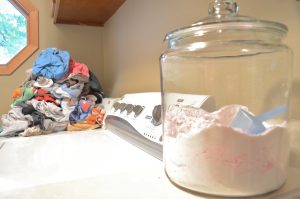
In short, in the absence of detergent factories, People used homemade washing goods in the past. Although these homemade detergents may suit their needs, they also had drawbacks. For example, there weren’t lots of choices and they couldn’t always remove hard stains.
Recipe for homemade laundry detergent
It is good to know that there are many alternatives to laundry detergents. They are mostly homemade with simple recipes. Homemade detergents are used for several reasons. More housewives used them to save money or avoid waste, and it is a good reason to make many individuals to manufacture their own laundry detergent. Some people would consider soap as a laundry detergent alternative but Soap, by itself, cannot be a perfect option for washing machines because the soap tends to accumulate in the fabrics, leave residues, and it also accumulates in the washing machine. It would lead to washing machine malfunction in a long run. If you are going to use soap in the washing machines, at first grate bar of soap to prevent any residue on the garments.
The combination of borax, washing soda, a grated bar of soap, and lime essential oil can result in a perfect homemade laundry detergent.
In summary, knowing that laundry detergents can be made at home using basic recipes and at less price seems pleasant to many individuals. Homemade detergents are employed for a variety of reasons, such as saving money or minimizing waste
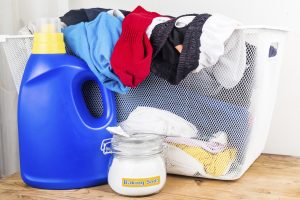
Detergent homemade
DIY (do it yourself) detergent product is not an impossible task or a new thing. The idea of making homemade detergents has been a good option for a long time and there are few differences in similar recipes.
The research proved that as the detergent industry improved over time, these cleaning products became more effective but less eco-friendly. These laundry detergent products have altered the way people clean all across the world and turned into an inseparable part of people’s life.
On the other hand, it may be surprising to some people that despite others’ beliefs, homemaking many of beauty products and cleaning products can be done easily, such as homemade laundry detergent. Making our own detergent is cheaper and its quality can be improved too. homemaking detergent would eliminate the side effects of harmful chemicals from the environment which would result in a safer and cleaner planet. By knowing the basic materials and their effects, you can make reasonable changes in recipes to adjust the detergent as you wish.
For example, if you have a new baby and care about his health, or you have sensitive skin, Castile soap is a perfect option. This soft soap is a plant-based ingredient that contains olive oil and is extremely gentle and it can be a perfect replacement for any ordinary soap.
In summary, making homemade detergents has been a popular alternative for a long time, and similar methods have few differences.
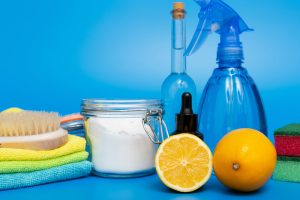
Detergent ingredients
The ingredients of a detergent product have a direct impact on its cleanliness power. The most basic materials that are used in detergent making process are Builders, surfactants, bleach, enzymes, dirt removal agents, foam enhancers, corrosion inhibitors, brighteners, dye transfer inhibitors, scent boosters, colors, fillers, and formulation aids. But the most important laundry detergent component is alkalies, which are soluble salts and a component that reacts with an acid to neutralize the stains. They effectively remove dirt and stains from fabric without rubbing excessively. Grease can be removed with soluble salts of an alkali metal such as potassium or sodium.
Detergent recipe
The liquid detergents don’t have a high expiration date. So it would be economical and a preventing way from any waste if you make your own liquid detergent. You can make as much as you’d like at once; just use the ingredients in a precise amount. Note that the recipe for liquid detergent is a little bit different.
The instruction is as follows:
Combine sodium lauryl ether sulfate and water in a mixing bowl. Fill a beaker halfway with the mixture and a little water. Add and mix 50 grams of coconut ethanol (it is a corrosion inhibitor) until the mixture becomes sticky. Then mix a teaspoon of STPP (sodium tripolyphosphate) in a separate mixing bowl. Get your cream and slowly re-mix it. Now the detergent liquid is ready to use.
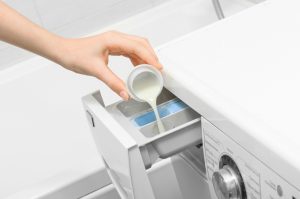
Detergent home depot
Preparing a suitable home depot is an important requirement for detergent manufacturers especially when they produce goods that are less resistant to environmental factors. So the manufacturers have to select the best possible place as houseware.
Warehouses should be built in locations that are convenient for both the buyer and the seller to ensure efficient product transportation as well as cost savings. These warehouses should be located near railway stations, major highways, seaports, and airports, so that commodities may be easily loaded and unloaded. It is also recommended that the warehouse be located in open areas so that trucks can freely move around.
Furthermore, the warehouse should be secured against possible theft as well as damage from heat, rainfall, insects, rodents, and fire. To protect warehouses from unanticipated mishaps, fire extinguishers, safety alarms, and round-the-clock security systems should be in place.
DIY laundry detergent
The steps of DIY (do it yourself) or making laundry detergent:
- To begin, break down the Fels-Naptha bars into laundry soap pellets. The pieces should be small enough to be solved quickly in your washing machine.
- After that, you’ll mix all of the detergent ingredients together. The simplest method to do this, is to use a pair of garbage bags! Fill a trash bag halfway with laundry soap pellets, borax, washing soda, baking soda, OxiClean, and Purex Crystals (if using). Place the garbage bag in another trash bag after tying it shut. Tie the second bag, then press, tumble, and roll the bags for a few minutes to mix everything together.
- Simply cut a hole in the corner of both bags and pour the detergent into a large jar or container for storage once you’ve finished mixing. If you live in a humid climate, make sure to use an airtight container to keep your detergent dry. To help absorb any moisture, drop a few silica gel packets into the detergent.
We can ensure you this detergent works perfectly in any washing machine.

Laundry detergent DIY
DIY Natural detergent is all about rediscovering the value of doing things yourself, organically, and its advantages. Homemaking laundry detergent is a fun project that will save money while also helping you get rid of hazardous chemical cleaners from your home. It is expected making homemade laundry detergent to be difficult and time-consuming, but it turned out to be neither. Making your own laundry powder is also quick, simple, and economical and all of the needed ingredients may be found in the laundry section of most supermarkets.
There are some little changes in the recipes of homemade laundry detergents, depending on where they are going to be used and your expectation. For example, Because of the little suds, HE front-load washers require special soap. They require less sudsy soap since they use less water. The good news is that this homemade detergent produces a tiny amount of suds and as a result, you don’t need to pay a lot for a HE detergent.
In short, homemaking detergent is not only time-consuming or difficult but also an economical way to prevent any waste.

Make your own laundry detergent
You may try to make laundry detergent on your own. But there are some points that should be taken into account.
Most DIY laundry detergents consist of water softeners such as baking soda, washing soda, and borax, as well as a cleaning agent, usually a grated bar of soap. The water softener’s purpose is to make the water softer. You’ve probably heard the terms hard water and soft water, which refer to the amount of calcium and magnesium in the water.
The most common water softeners used in homemade laundry soap are borax and washing soda, although they’re promoted as laundry boosters instead of detergents because they’re designed to help, not replace, a detergent.
If you live in a region with really hard water, utilizing homemade laundry soap is even more difficult since the high quantities of calcium and magnesium make it nearly impossible for the soap to wash free of the textiles.

Generally speaking, although homemaking detergents have some benefits, considering the water quality that is used in your region is also an important factor.
Finally, if you need any help, experienced consultants are here to help you. Our company can also provide you with getting representation. Contact us!

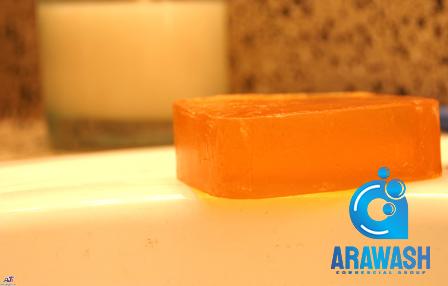

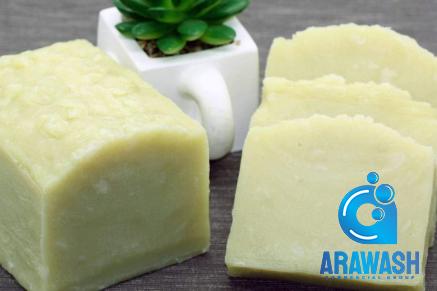
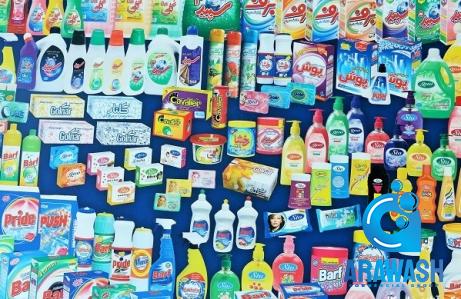

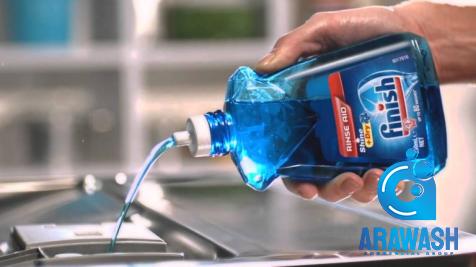
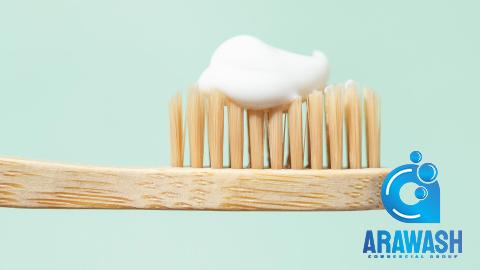
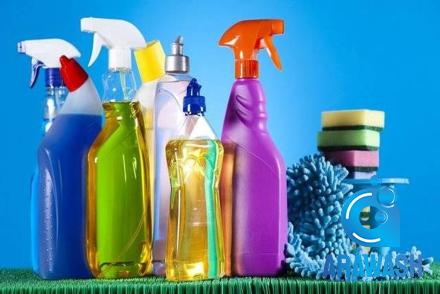
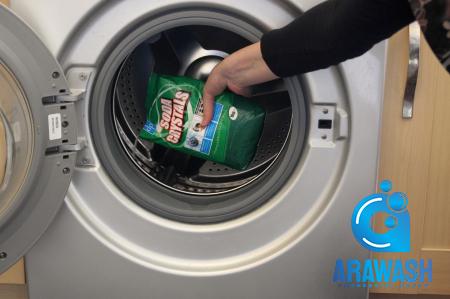
Your comment submitted.